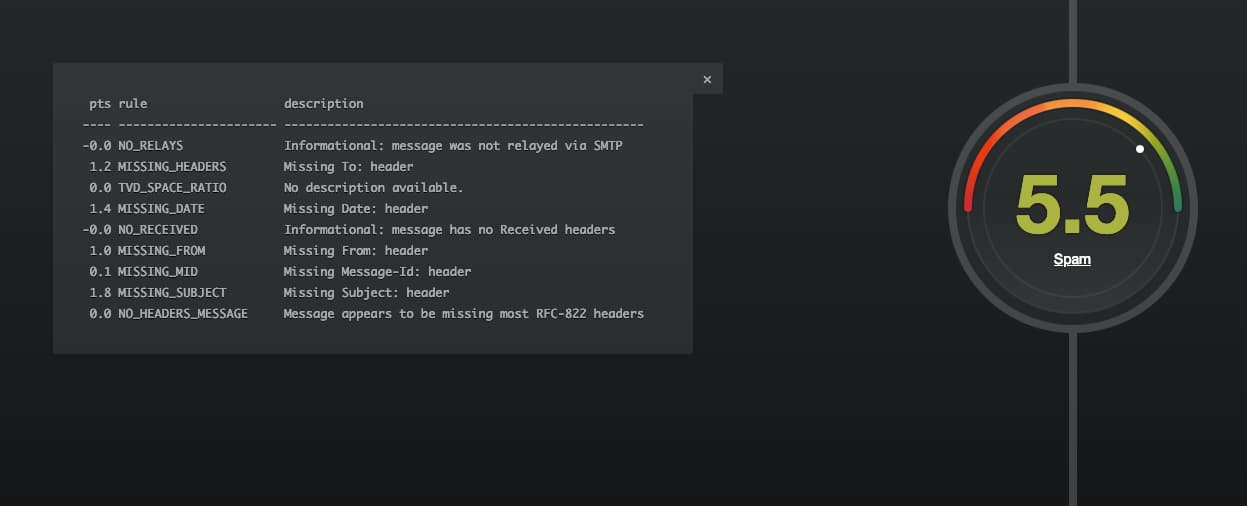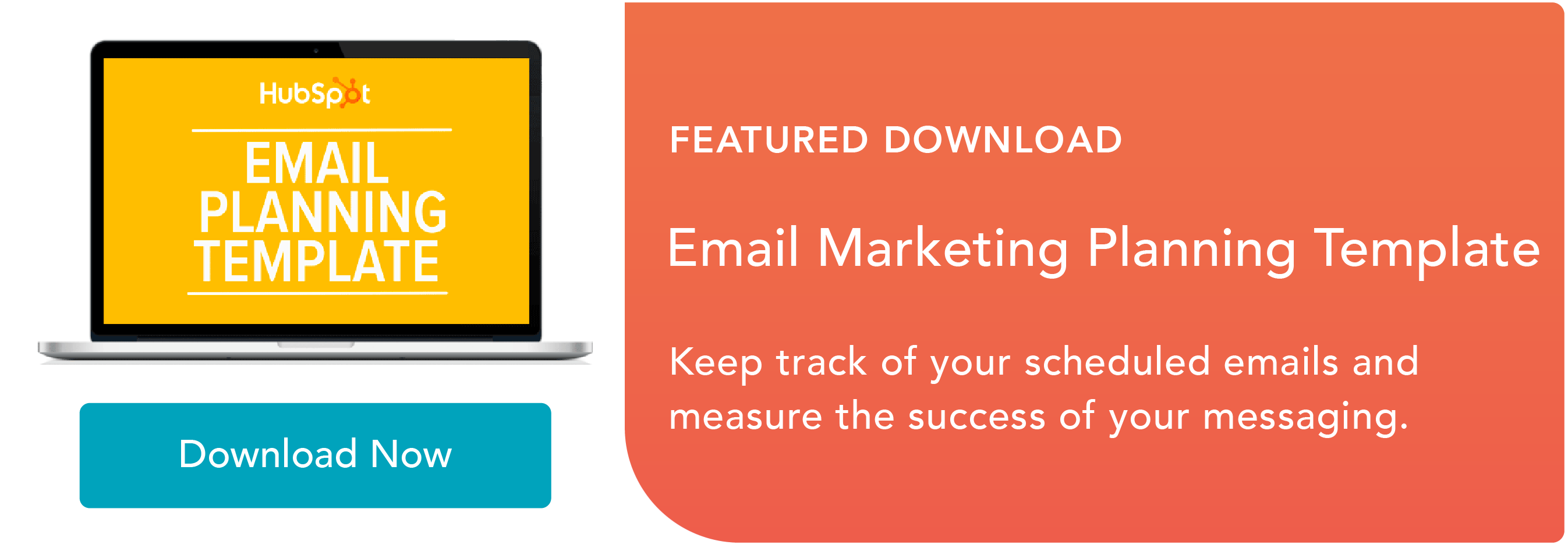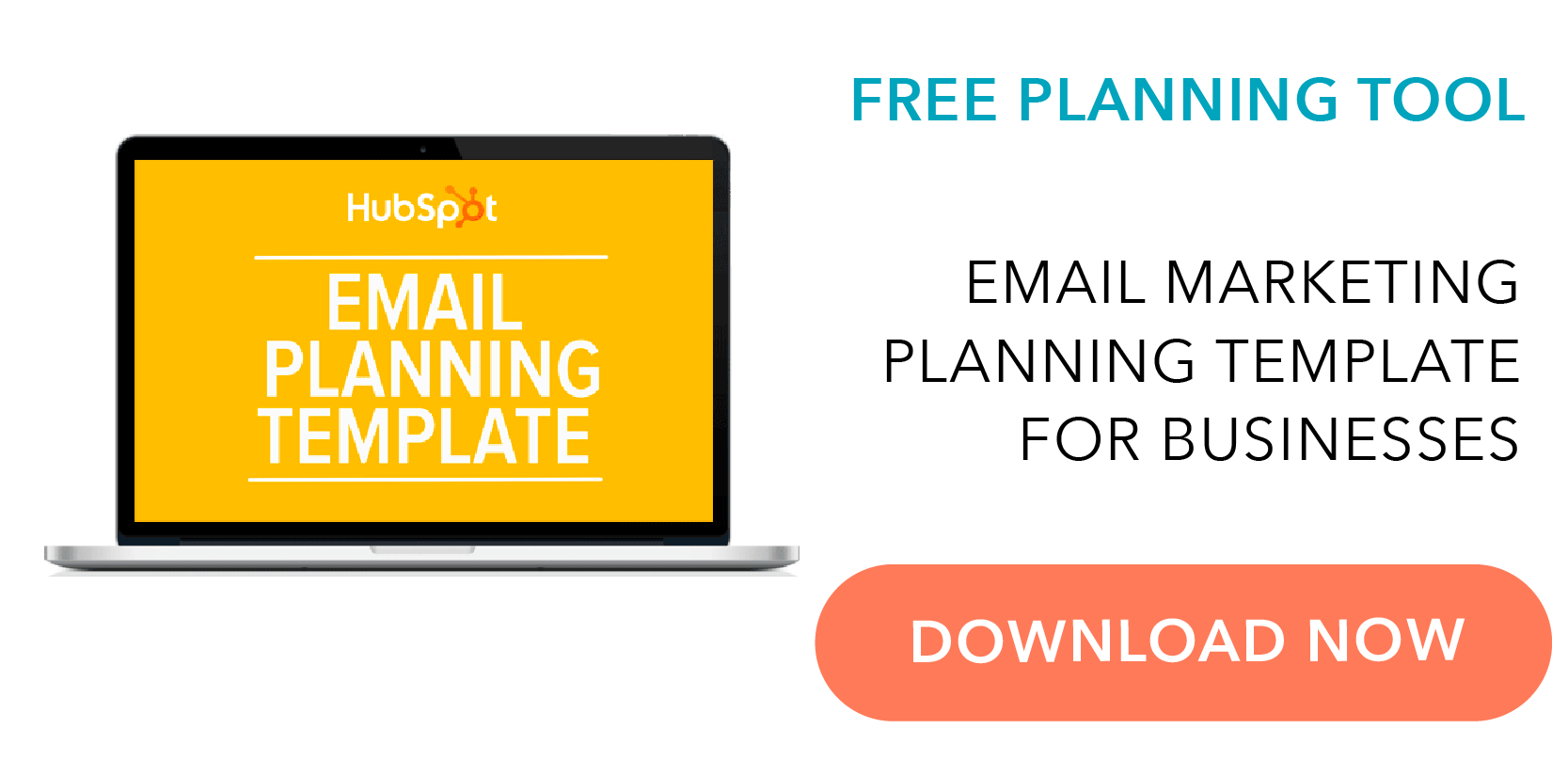Marketers spend a lot of timedrafting poignant email copy, designing wonderfully brandedemail templates, and craftingsuccinct and enticing email subject linesthat get open and click-through rates skyrocketing.
But before hitting send, have you considered whether your subscribers will even get the opportunity to read your email?
Email Deliverability
电子邮件的送达的速度是你的教育津贴il actually makes it into recipient inboxes. An email deliverability rate can be lower when an email bounces or gets automatically filtered into a spam folder.
No matter how legitimate of an email marketer you are, there are a host of things you may not even know about that can prevent your email from ever reaching someone's inbox. With more stringent laws and increasingly sophisticated spam filters, it's to your benefit to know everything that can affect your email's deliverability.
If steering clear of legal trouble isn't enough to convince you, squeezing more ROI out of youremail marketingefforts certainly should. Take a look at the things you should absolutelyneverdo in your email marketing if you want your messages to be successfully delivered, and the things you can proactively do to increase your rate of email deliverability.
The first step in improving email deliverability will be to run a test to see if you are encountering any issues. To learn more about email deliverability test tools,click here.
29 Ways to Avoid Sending Spam Email & Improve Your Email Deliverability
What You ShouldNeverDo
1. Don't buy or rent email lists.
Yes, you can legally rent and purchase lists of people who have agreed to email communications -- butit's never a good idea.Not only is it a dirty email marketing tactic that goes against the Terms of Service for your email service provider, but these people don't actually know you -- and it's likely they won't even wantyouremails. In other words, there's a good change they'll mark you as spam. Plus, let's be honest ... high quality email addresses are never for sale.
2. Don't scrape sites for email addresses.
Scraping websites for email addresses may seem like a fast way to build a contact list, but it's bad for your business -- not to mention illegal in many countries, including the United States,thanks to the CAN-SPAM Act.
3. Don't email people who have bounced repeatedly.
Hard bounces are the result of an invalid, closed, or non-existent email address, and these emails will never be successfully delivered. Bounce rates are one of the key factors internet service providers (ISPs) use to determine an email sender's reputation, so having too many hard bounces can cause them tostop allowing your emails in folks' inboxes.
(Email deliverability is covered extensively inHubSpot's free email marketing certification course, so check that out to learn more.)
4. Don't use all caps anywhere in your email or its subject line.
Don't yell at people. It's not nice. Using all caps in your subject line might get the recipients' attention, but probably not in a good way. Using all caps can really rub people the wrong way. It's annoying and can seem spammy.
In fact,according to a study by the Radicati Group,more than 85% of respondents prefer an all-lowercase subject line to one in all caps.
Instead of using disruptive tactics like all caps to get people's attention, try personalizing your emails, establishing relevancy, and using catchy and delightful language. (Read this blog post on how to write compelling emailsfor more tips.)
5. Don't use exclamation points!!!!!
Another thing that can make your subject line and/or email look unprofessional and spammy? Exclamation points -- especially a whole bunch of them in a row. And when69% of email recipientsreport email as spam based solely on the subject line,you'll want to stay away from triggers like this as much as you can.
Plus, when you ask punctuation to do a word's job, it can really dilute your message. The next time you're tempted to use an exclamation point in an email (or anywhere, really),use this flowchart, "Should I Use an Exclamation Point?", as a gut check.
6. Don't use video, Flash, or JavaScript within your email.
By default, most email clients don't allow the ability to view rich media like Flash or video embeds. Instead, use an image of your video player (with a play button) that links to the rich media on a website page.
As for JavaScript and other dynamic scripts, even if a spam filter allows your email through, most email clients won't allow these scripts to function -- so avoid using them altogether.
7. Don't embed forms in your emails.
Forms aren't supported in email across common email clients due to security risks. Instead, placea call-to-action buttonor a link toa landing page with a formin the body of your email.
(HubSpot customers: Learn how to add a call-to-action button to your emails in HubSpothere, and how to create a form for your landing pages in HubSpothere.)
8. Don't include attachments to your emails.
If you want to send your recipients something like a PDF or a Word document, don't attach the file to the email -- otherwise your email could get blocked by spam filters. Instead, upload the attachment to your website and link to the file location in your email usingan effective call-to-action button. This'll minimize the chance of being blocked by spam filtersanddecrease the load time of your email.
(HubSpot users:HubSpot's attachment toolin the email editor automatically does this for you. Simply highlight a bit of text or an image and click the attachment icon, and HubSpot will turn that text or image into a link leading to that attachment.)
9. Don't use spam trigger words.
One of easiest ways to avoid spam filters is by carefully choosing the words you use in your email's subject line. A good rule of thumb is this: If it sounds like something a used car salesman would say, it's probably a spam trigger word. Think "free," "guarantee," no obligation," and so on. (For more,look at this list of common spam trigger words.)
Instead of using these trigger words, be creative, interesting, and informative -- without giving too much away. Somebetter ideas for subject linesinclude:
- "Hi [name], [question]?"
- "Did you get what you were looking for?"
- "You are not alone."
- "Feeling blue? Like puppies?"
10. Don't use a red font when drafting your emails.
Same goes for using invisible text, i.e. a white font on top of a white background. These are common tricks that spammers use, so it's an instant red flag for spam filters.
In fact, people don't like when marketers use irregular fonts, font sizes, and font colors at all in emails. Inthat same study by the Radicati Group, out of the top 10 objectionable email trends, four revolve around fonts. Over 60% of respondents considered it unacceptable for email marketers to use different font sizes, irregular fonts, and different font colors.Nearly 70% of respondents prefer fonts to be one size.
11. Don't forget to use spell check.
According to that Radicati Group study, 80% of all respondents find spelling and grammatical errors the most unacceptable email offense. But spelling mistakes aren't just unprofessional -- they're actually a spam trigger, too.
It's easy for little spelling mistakes to slip by -- especially when you're self-editing.阅读这篇文章,了解最常见的拼写nd grammar mistakesso you never make them again.
12. Don't jam pack your email copy with keywords.
Keyword-stuffing your emails means shoving as many keywords into your emails as you can. There's a reason Google give a lower rank to webpages that are stuffed with keywords -- and that's because it's harmful to user experience. No one wants to read content that's optimized for a robot.
To make it more likely folks will open your emails and not mark them as spam, write your emails for humans, not robots. Copywriting that makes people want to take action is both simple and compelling. To make your writing sound more personable and relatable, use casual language, colloquial expressions, and even personal anecdotes.
I love the example below fromTurnstyle Cycle(fromour roundup of 12 great email marketing examples).The copy is beautiful in its simplicity. It's friendly, yet sincere -- especially with the following lines:
- "We know you are busy and would hate to see you miss out"
- "Please let us know if we can help accommodate in any way possible"
- "Feel free to give us a call - we want to help :)"
Plus, they provided me with the exact details I needed to know -- a reminder of what I'd signed up for and when, the expiration date, and a phone number to reach them. Check it out:

13. Don't use an overwhelming number of images, or huge images.
Using one large image as your entire email, or too many images in general, tends to end up in recipients' spam folders.
You'll also want to make your image file sizes as small as possible without losing their visual integrity to prevent long email load times. (If you're a HubSpot user, the email tool automatically compresses images in emails so they load faster. For non-HubSpot users, some good image compression tools includeCompressor.io,Compressjpeg.com, andJpegmini.com.)
Not to mention, Microsoft Outlook doesn't recognize background images, so you may want to avoid those and use a background color instead.
What YouShouldDo
14. Keep your email lists current and clean.
Even if your list is entirely built on valid opt-ins, you are at risk of being branded a "spammer" if you don’tpractice proper email hygiene. Why? Because internet service providers (ISPs) base complaint rates onactivesubscribers, not total subscribers.
此外,过期的电子邮件地址可以变成垃圾邮件traps, meaning that even if you acquired emails in a legitimate manner, the abandoned addresses that haven't engaged in years may have morphed into spam traps. Hitting even just one spam trap can cause deliverability problems.
Expired email addresses can also turn into unknown users (bounces). If you hit unknown accountsat a rate higher that 5%, then ISPs are going to see you as someone who has really bad email hygiene. The result? They'll make it harder for your emails to reach people's inboxes, and your overall sender reputation will definitely drop -- leading to even more trouble reaching people's inboxes.
By keeping your email lists current and clean, you'll decrease the likelihood people will flag your emails as spam. You can identify inactive subscribers and expired email addresses with metrics such as opens, clicks, or website activity.
15. See if you can reengage inactive or infrequently active subscribers.
"Graymail" refers to email people technically opted in to receive, but don'treallywant, leading them to become less active or inactive altogether. Although it's not considered spam, sending graymail is problematic because it can hurt the deliverability of your email overall. Tipped off by low engagement rates, ISPs and inbox providers may deliver email from known-graymail senders straight to recipients' "junk" folders -- so the email technically gets sent (and can even appear to have been delivered), but it's not necessarily seen.
Keep track of your inactive and infrequently active subscribers, anddevelop re-engagement campaignsfor contacts who have stopped engaging with your messages. For example, you could set conditions such as the length of time since their last form submission, website visit, or email click, triggering the email when it's been a while since a contact last engaged with you.
In your workflow, you might try sending them an exclusive offer or coupon to get them excited about your company again. Or, you might ask them for feedback by sending out a quick survey to see what they would like to see in your emails. (Read this blog post for more ideasfor launching an effective email re-engagement campaign.)
16. Do use double opt-in.
Double opt-in means that after someone subscribes to your email list, you send them a follow-up email with a confirmation link ensuring they actually want to receive email communications from you.
Users that have to confirm that they want email communications from your company are the ones that will fully read and engage with the emails they receive from your business. When you use double opt-in, your email lists will be much more qualified and your subscribers much more engaged. (HubSpot customers: Learn how to set up double opt-in in HubSpothere.)
17. Ask your subscribers to add you to their address book.
Spam filters are more aggressive than ever -- so much so that sometimes, the emails people value and want to readstillend up in their spam boxes.
But most spam filters allow you to whitelist a sender by adding their email address to their email's address book. When subscribers add you to their address book, spam filters will back off.
18. You must include a clear unsubscribe link and a physical mailing address in your email footer.
Allowing people to unsubscribe is important for list hygiene because anyone receiving your emails should actuallywantto receive them -- otherwise, you're just spamming them. But did you know that it'sillegalto not have a way for your recipients to easily unsubscribe in many countries, including the United States?
In your marketing emails, you must include a way for folks to unsubscribe from your email list, either by simply sending a reply email or by clicking no more than one level deep to reach a page from which they can unsubscribe. Which method you choose is entirely up to you, as long as the information is clear and easy to locate.
The most common place for these unsubscribe CTAs is in the footer of your email, so users tend to know to look for it there -- which makes for a better user experience. Here's an example from one of HubSpot's emails:

In addition to the unsubscribe link, include a link to update subscriber preferences, which you can also see in the example above. That way, recipients can unsubscribe from just one type of email instead of all of them.
19. Honor your unsubscribes and remove them from your mailing list.
If someone unsubscribes, they must come off your email list. It's the law. This should go without saying.Check out this list of effective unsubscribe pagesto make the unsubscribe process a little more delightful for recipients.
This is whereemail marketing software无缝集成与CRMhandy -- because any unsubscribes are immediately processed and recorded in both the contact record and within the email software. (But if you're removing unsubscribed addresses from your list manually, make it a top priority to process that request.)
20. Use a familiar sender name.
Because people are so inundated with SPAM, they hesitate to open email from unfamiliar senders. Make sure recipients can recognize you in your sender by using your brand name.
Better yet, send the email from a real person. Recipients are typically more likely to trust a personalized sender name and email address than a generic one. At HubSpotwe found thatthat emails sent from "Maggie Georgieva, HubSpot" perform better in terms of openand比电子邮件发送从“中心点击率pot." (HubSpot customers: Learn how to personalize the "From" name and email addresshere.)
21. Include your recipient’s name in the "To:" field.
This way, spam filters know that you do, indeed, know your recipient. Plus,personalizing your emailsaround your contacts can also be vital to their engagement with your content.
22. Offer recipients both an HTML and a plain text version of your emails.
Plain text emails are simply emails void of any formatting, while HTML (HyperText Markup Language) emails use formatting that let youdesign more beautiful emailswith attractive visual components. By offering both a plain textandHTML version of a single email, you're not only indicating your legitimacy to ISPs, but you're also making your emails more reader-friendly.
Most email marketing tools will let you easily create plain-text versions within their email editor, so take those five extra minutes to create and optimize the plain-text version of your email. (HubSpot customers: Learn how to create a plain-text email in HubSpothere.)
Also, make sure the HTML version is properly coded: If there are broken tags in your HTML, the email provider and users might mark it as spam.
23. Allow people to view your email in a web browser.
Even after every step is taken to assure proper email design, an email client canstilldisplay an email poorly. Include a link in every email to view the email as a web page. (HubSpot customers: Learn how to do this easily in HubSpothere.)

24. Include alt text in your email images.
Many email clients block imagesby default. This means that when someone opens your email, the images won't load unless they click a button to show them or change their default settings.Adding alt text to your imageshelps recipients understand your message even if they can't see the images.
This is especially bad if you use an image as a call-to-action. Without alt text, a "turned off" image will look like this:

When you add alt text to the image, recipients will still know where to click to complete the action:

You can either edit the alt text in your email tool's rich text editor (just right-click the image and edit away), or you can manually enter it in the HTML editor of your email tool like this:
25. Keep your emails short and sweet.
Too much copy is another red flag for spam filters. Not only that, but people generally like concise emails better. Everyone's busy and their inbox is already full, so why make things worse?
One of the best ways to keep things short and sweet is to write like a human. Writing your email like you were talking to someone in real life makes it feel much more approachable and relevant. (Read this blog post on how to write compelling emailsfor more tips.)
If you do have to write a lengthier email, then break it up into multiple paragraphs. Giving visual breaks and composing the email with a clear introduction, middle, and conclusion will make it much easier on your reader.
26. Test your emails before sending them.
There are a lot of email clients out there these days that email marketers have to consider when creating emails. On top of that, we have to consider mobile users, too -- after all,53% of peopleread email on their mobile devices.
It turns outeach of these clients displays emails differently. While it may be time-consuming to test out your emails forallemail clients, you'll want to test them for the ones your audience uses the most. According toLitmus' research of 1.06 billion email opens, the top five email clients are:
- Apple iPhone's Mail app(28% ofusers)
- Gmail(16% of users)
- Apple iPad's Mail app(11% ofusers)
- Google Android's Mail app(9% ofusers)
- Outlook(9% ofusers)
If your email marketing tool lets you, go ahead and preview what your email looks like in different email clients and devices that are popular with your audience. (HubSpot customers: Use ourPreview in other inboxesfeature to send a test email and see how the design of your email looks in each email client.)
You should also send out a test version of your email before you send out the real deal to ensure it's working properly. (HubSpot customers: Learn how to test your emailshere.)
27. Get an email sender accreditation from a third party.
Sender accreditation is a third-party process of verifying email senders and requiring them to follow certain usage guidelines. In return, you'll be listed in a trusted listing that ISPs reference to allow certain emails to bypass email filters.
28. Monitor the reputation of your sender's IP address.
Your emails' deliverability depends largely on your IP address' reputation. If you're sending email from an IP address with a poor reputation, your emails are far less likely to be successfully delivered to senders' inboxes.
DNSstuff.comlets you check on whether or not you are a blacklisted sender -- something many unlucky email marketers aren't even aware of.
29. Always stay up-to-date on changes in email sending laws, ISP behavior, and spam filter technology.
Email marketing is constantly evolving, and staying in the know helps ensure you’re always following best practices -- and the law. Responsible and legitimate email marketers make a point of regularly reading up on email sending laws, ISP behavior, and spam filter technology.
If you're looking for more information, check in with your company's legal department or a trusted lawyer to ensure you're staying within the boundaries of the law.Want to learn more about email deliverability? Watch classsixin our HubSpot Academy'sEmail Marketing Certification coursetaught by HubSpot'sPost Master, Tom Monaghan.
Email Deliverability Test Tools
If your email platform doesn't offer enough deliverability analytics, we suggest using other tools that can help you test for delivery issues before your message goes out to your mailing list.
Here are three free tools that you can use:
Mail-Tester.com
Every time someone visits Mail-Tester.com, they'll see a treehouse with a auto-generated email address listed on it that changes every time you visit the site. You can send your email to the address listed, then click "Check Your Score." Mail-Tester will then give you a free email deliverability score based on the email that was sent to the unique email address.
The software will analyze the text in the message,your mail server, and IP to determine if there are any deliverability issues. Free users can access the report for seven days. You can also subscribe for unlimited email tests and reports that last for 30 days.
Mailtrap.io
Mailtrap is an email testing tool that allows you to run numerous email experiments in a safe testing environment. It captures your test emails and provides options for inspecting and debugging your templates. With Mailtrap, all your email tests are neatly organized in one place and can’t be sent to real subscribers by mistake.
Each email captured into Mailtrap inbox gets a spam score with a detailed breakdown of factors affecting the result. The higher the score, the better odds an email has of reaching the recipient’s inbox.
With Mailtrap, you can check whether your domain is featured on common blacklists. If it is, you may want to address this before sending the next campaign.
This tool can also help you validate HTML and CSS properties of your template to avoid rendering issues.
Spamcheck
Spamcheck is a simple and free tool that allows you to paste a plain text message into a text box and analyze it for any language that might trigger spam filtering.
After placing the text and clicking "Check your score," the software will give you a score out of 10 based on what's included and not included in the email body. For a bad email, it might look something like this:
 MxToolBox
MxToolBox
MxToolBox allows you to test your email deliverability by sending a test email toping@tools.mxtoolbox.com. This email address will reply to the email with a linked call to action that says "View your full Deliverability Report." You can then click on the CTA to see a deliverability score and information about what might stopping your email from going into inboxes. If you want to see your result later on, but no longer have the reply email, you can search for the result using your email address onthe MxToolBox site.
Still want to learn more about email marketing after reading the tips above? Consider takingHubSpot's free email marketing certification course,which will walk you through even more best practices.
Originally published Jul 10, 2019 3:59:00 PM, updated June 09 2021
Don't forget to share this post!
Related Articles



Expand Offer
Social Media Content Calendar Template
Get it now



